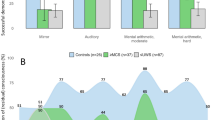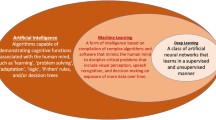Abstract
The immunoreactivity of the serotoninergic receptor subtype 1A (5HT1AR) was quantitatively analyzed in the human infant brainstem medulla (caudal and rostral levels). We hypothesized that immunoreactivity of 5HT1AR would be reduced in infants diagnosed with sudden infant death syndrome (SIDS). In particular that those infants with known clinical risk factors (including cigarette smoke exposure, bed sharing and sleep position) would have greater changes than those without clinical risks. Comparing SIDS (n = 67) to infants who died suddenly with another diagnosis (non-SIDS, n = 25), we found decreased 5HT1AR immunoreactivity in the majority of the nuclei studied at the rostral medulla level including dorsal motor nucleus of the vagus (DMNV), nucleus of the solitary tract, vestibular, and inferior olivary nucleus (ION). There was a significant relationship with all risk factors for 5HT1AR, especially for DMNV, suggesting that 5HT1ARs are highly vulnerable to various insults within the SIDS DMNV. This study not only provides further evidence of abnormalities within the brainstem serotoninergic system of SIDS infants, but also shows that these changes may be associated with exposure to clinical risk factors.


Similar content being viewed by others
References
Azmitia EC (2001) Modern views on an ancient chemical: serotonin effects on cell proliferation, maturation, and apoptosis. Brain Res Bull 56:413–424
Azmitia EC, Whitaker-Azmitia PM (1997) Development and adult plasticity of serotoninergic neurons and their target cells. In: Baumgarten HG, Geothert M, Aghajanian GK (eds) Serotoninergic neurons and 5-HT receptors in the CNS. Springer, Berlin
Azmitia EC, Gannon PJ, Kheck NM, Whitaker-Azmitia PM (1996) Cellular localization of the 5-HT1A receptor in primate brain neurons and glial cells. Neuropsychopharm 14:35–46
Barnes NM, Sharp T (1999) A review of central 5-HT receptors and their function. Neuropharm 38:1083–1152
Baumgarten HG, Geothert M, Aghajanian GK (1997) Serotoninergic neurons and 5-HT receptors in the CNS. Springer, Berlin
Byard RW, Krous HF (2004) Research and sudden infant death syndrome: definitions, diagnostic difficulties and discrepancies. J Paediatr Child Health 40:419–421
Collin M, Backberg M, Onnestam K, Meister B (2002) 5-HT1A receptor immunoreactivity in hypothalamic neurons involved in body weight control. Neuroreport 13:945–951
Darnall RA, Harris MB, Gill WH, Hoffman JM, Brown JW, Niblock MM (2005) Inhibition of serotonergic neurons in the nucleus paragigantocellularis lateralis fragments sleep and decreases rapid eye movement sleep in the piglet: implications for sudden infant death syndrome. J Neurosci 25:8322–8332
Hunt CE (1992) The cardiorespiratory control hypothesis for sudden infant death syndrome. Clin Perinatol 19:757–771
Kahn A, Riazi J, Blum D (1983) Oculocardiac reflex in near miss for sudden infant death syndrome infants. Pediatrics 71:49–52
Kato I, Franco P, Groswasser J, Kelmanson I, Togari H, Kahn A (2000) Frequency of obstructive and mixed sleep apneas in 1, 023 infants. Sleep 23:487–492
Kinney HC (2005) Abnormalities of the brainstem serotonergic system in the sudden infant death syndrome: a review. Pediatr Dev Pathol 8:507–524
Kinney HC, Randall LL, Sleeper LA, Willinger M, Belliveau RA, Zec N, Rava LA, Dominici L, Iyasu S, Randall B, Habbe D, Wilson H, Mandell F, McClain M, Welty TK (2003) Serotonergic brainstem abnormalities in Northern Plains Indians with the sudden infant death syndrome. J Neuropath Exp Neuro 62:1178–1191
Lalley PM, Bischoff AM, Richter DW (1994) Serotonin 1A-receptor activation suppresses respiratory apneusis in the cat. Neurosci Lett 172:59–62
Lalley PM, Bischoff AM, Schwarzacher SW, Richter DW (1995) 5-HT2 receptor-controlled modulation of medullary respiratory neurones in the cat. J Physiol 487:653–661
Machaalani R, Waters KA (2003) NMDA receptor 1 expression in the brainstem of human infants and its relevance to the sudden infant death syndrome (SIDS). J Neuropathol Exp Neurol 62:1076–1085
Machaalani R, Waters KA (2008) Neuronal cell death in the sudden infant death syndrome brainstem and associations with risk factors. Brain 131:218–228
Machaalani R, Rodriguez M, Waters KA (2007) Active caspase-3 in the sudden infant death syndrome (SIDS) brainstem. Acta Neuropathol 113(5):577–584
Narita N, Narita M, Takashima S, Nakayama M, Nagai T, Okado N (2001) Serotonin transporter gene variation is a risk factor for sudden infant death syndrome in the Japanese population. Pediatrics 107:690–692
Ozawa Y, Okado N (2002) Alteration of serotonergic receptors in the brain stems of human patients with respiratory disorders. Neuropediatrics 33:142–149
Panigraphy A, Filiano JJ, Sleeper LA, Mandell F, Valdes-Dapena M, Krous HF, Rava LA, Foley E, White WF, Kinney HC (2000) Decreased serotonergic receptor binding lip-derived regions of the medulla oblongata in the sudden infant death syndrome. J Neuropathol Exp Neurol 59:377–384
Patel TD, Zhou FC (2005) Ontogeny of 5-HT1A receptor expression in the developing hippocampus. Brain Res Dev Brain Res 157:42–57
Paterson DS, Trachtenberg FL, Thompson EG, Belliveau RA, Beggs AH, Darnall R, Chadwick AE, Krous HF, Kinney HC (2006) Multiple serotonergic brainstem abnormalities in sudden infant death syndrome. JAMA 296:2124–2132
Paxinos G, Huang X (1995) Atlas of the human brainstem. Academic Press, California
Richter DW, Schmidt-Garcon P, Pierrefiche O, Bischoff AM, Lalley PM (1999) Neurotransmitters and neuromodulators controlling the hypoxic respiratory responses in anaesthesized cats. J Physiol 514:567–578
Say M, Machaalani R, Waters KA (2007) Changes in serotoninergic receptors 1A and 2A in the piglet brainstem after intermittent hypercapnic hypoxia (IHH) and nicotine. Brain Res 1152:17–26
Schwartz PJ, Stramba Badiale M, Segantini A, Austoni P, Bosi G, Giorgetti R, Grancini F, Marni ED, Perticone F, Rosti D, Salice P (1998) Prolongation of the QT interval and the sudden infant death syndrome. N Engl J Med 338:1709–1714
Sporton SC, Shepheard SL, Jordan D, Ramage AG (1991) Microinjections of 5-HT1A agonists into the dorsal motor vagal nucleus produce a bradycardia in the atenolol-pretreated anaesthetized rat. Br J Pharmacol 104:466–470
Taylor NC, Li AH, Nattie EE (2005) Medullary serotonergic neurones modulate the ventilatory response to hypercapnia, but not hypoxia in conscious rats. J Physiol 566:543–557
Teng YD, Bingaman M, Taveira-DaSilva AM, Pace PP, Gillis RA, Wrathall JR (2003) Serotonin 1A receptor agonists reverse respiratory abnormalities in spinal cord-injured rats. J Neurosci 23:4182–4189
Waters KA, Meehan B, Huang JQ, Gravel RA, Michaud J, Cote A (1999) Neuronal apoptosis in sudden infant death syndrome. Pediatr Res 45:166–172
Weese-Mayer DE, Berry-Kravis EM, Maher BS, Silvestri JM, Curran ME, Marazita ML (2003) Sudden infant death syndrome: association with a promoter polymorphism of the serotonin transporter gene. Am J Med Genet 117:268–274
Willinger M, James LS, Catz C (1991) Defining the sudden infant death syndrome (SIDS): deliberations of an expert panel convened by the National Institute of Child Health and Human Development. Pediatr Pathol 11:677–684
Acknowledgments
This research was funded by the SIDS Foundation of South Australia, NH&MRC (#302006), and A/Prof. Waters was supported by an NH&MRC Practitioner Fellowship (#206507). The authors thank the staff of the Department of Forensic Medicine, Glebe, NSW, Australia, for their co-operation in this study, and acknowledge the facilities as well as scientific and technical assistance from the staff of the NANO Major National Research Facility at the Electron Microscope Unit, University of Sydney.
Author information
Authors and Affiliations
Corresponding author
Rights and permissions
About this article
Cite this article
Machaalani, R., Say, M. & Waters, K.A. Serotoninergic receptor 1A in the sudden infant death syndrome brainstem medulla and associations with clinical risk factors. Acta Neuropathol 117, 257–265 (2009). https://doi.org/10.1007/s00401-008-0468-x
Received:
Revised:
Accepted:
Published:
Issue Date:
DOI: https://doi.org/10.1007/s00401-008-0468-x




